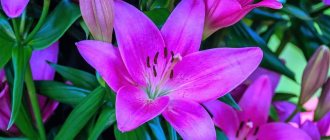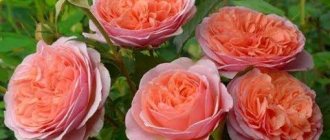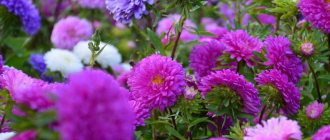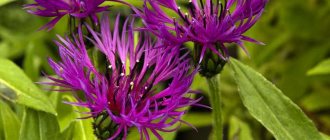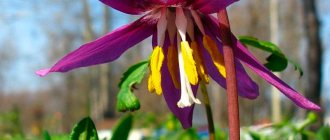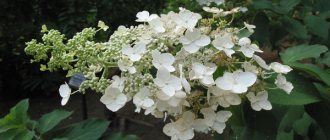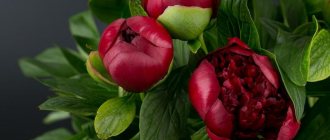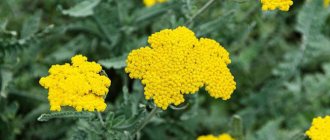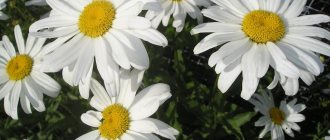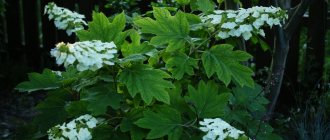Astra novobelgiya planting and care in open ground
Of course, in order to end up with beautiful, attractive flowers, it is extremely important to choose the right place for planting.
The condition of the plant, good flowering and, of course, decorative appearance will depend on this. Astra, as a rule, requires quite a lot of space, since its roots grow very widely, and the bushes can also turn out to be voluminous and spreading. In addition, it is best to choose a well-lit area, since without sunlight the plant will simply stop blooming.
The place should be located in an area protected from gusty winds and drafts, which can cause damage, first of all, to tall bushes. It will be better if the gardener plants the plant on a low hill where there will be no excess accumulation of moisture, because moisture can lead to the root system gradually beginning to rot, diseases will form, and the environment as a whole will be very attractive to various insects and pests that can also negatively affect the condition and appearance of the plant.
As for the soil, light, fertile soil that will be ventilated and easily permeable with water is suitable for asters. The acidity should be zero, because in such an environment asters grow much faster. If the soil is acidic, but the location is suitable, then the acidity can be reduced using some additives. In this case, the most popular additive is dolomite flour, which can be purchased at any gardening store.
Asters are usually planted in the spring, and for this purpose a selected area is prepared in the fall - it is cleared of weeds, and also dug up and all the necessary nutrients are added. It is best to also add humus. In the spring, it is best to weed and dig up the area again, add superphosphate and potassium sulfate to the soil. These components will allow the soil to recover faster after the winter period, and also prepare for the fact that new plants will soon be planted in it. It is best to plant aster in May; for this plant this month is the most ideal option: there is no longer a threat of frost, the soil has had time to warm up.
Asters are planted according to the following algorithm:
- several grooves are made in advance in the prepared soil
— you should pay attention to the optimal distance between the plants themselves, as well as between the rows. If the variety is low-growing, then ideally 20 centimeters will be enough, and between rows – 30 centimeters
If the variety is medium-sized, then there should be 3 centimeters between plants, and half a meter between rows. If we are talking about tall varieties of New Belgian asters, then there should be a distance of half a meter between them, and about 80 centimeters between the rows
- the seedling should be very carefully placed in the grooves at the required distance, and then also carefully sprinkled with soil so as not to damage the root system. You can lightly compact the soil around the planting with your hands
- after the plant is planted, it must be watered abundantly. Water for irrigation should be at room temperature; plants simply cannot tolerate cold water.
This plant is quite unpretentious if we are talking about caring for it. However, some rules of agricultural technology should be followed if we are talking about planting and subsequent care of the plant
Only in this case, the plant, having felt the care and attention from the gardener, will respond exactly the same - luxurious flowering, abundant growth, which will delight the gardener even in the days of autumn bad weather
Asters are very resistant to dry weather, but, as a rule, the flowering period in September falls during rainier weather, so it is necessary to control watering, ensure its moderation and ensure that the root system is not excessively waterlogged, as this can lead to quite negative consequences. If the weather is extremely dry, then it is best to water abundantly, but not very often, the water should be left to settle and heated to room temperature, this will be the most ideal option.
In spring and autumn, it is recommended to feed aster bushes with humus, but in limited quantities. In general, over the entire season it will be enough to feed the plant three times - with superphosphate and potassium sulfate, as we have already written about in this article. Typically, fertilizing is carried out 10-14 days after asters are planted in open ground, also during the formation of buds and at the very initial stage of asters flowering.
Diseases and pests
Aster is most susceptible to powdery mildew, which greatly spoils the appearance of the plant, covering it with a white coating. Long rainy weather favors its appearance. For prevention, special chemicals are used or the plant is properly cared for, which definitely improves its health and reduces the risk of disease.
Rust is definitely observed less frequently and appears in the form of “rusty” spots on the top of the sheet. The leaves are torn off and the plant is sprayed with fungicidal agents.
Verticillium wilt can only be saved by replanting the perennial plot into fertile soil. During the procedure, the rhizome is sprayed with Maxim or Vitaros.
Note! If the pests have already attacked the plant, only special chemicals will help.
Among the pests that settle on the aster are: leafhoppers, aphids, mites, slobbering pennies, and acaricides. To warn them:
- in the fall, dig up the soil thoroughly;
- maintain distance between plants during planting;
- remove dying shoots of the plant in a timely manner;
- feed the soil.
Growing an aster does not require much work, it is not capricious, not picky in its care, but what makes the garden look fabulous is its simply unrealistically beautiful bushes, especially standing out against the background of yellow faded plants in the autumn.
0 0 votes
Article rating
Application in landscape design photo
They can be used both in group compositions with other plants, and when planted alone in flower beds. They will look unusual next to dahlias or phlox. They also go well with peonies, carnations and other flowers whose shapes are similar to asters.
Where is it better not to plant asters:
- Next to magnificent roses or lilies that will simply outshine their delicate beauty.
- It is not recommended to plant in the place where tulips or other asters, potatoes or tomatoes used to grow. All of these plants can contribute to Fusarium infection.
- Don't plant under or near evergreen conifers because the green needles can cause nasty rust.
All wishes and precautions should be taken into account in order to grow high-quality and healthy specimens of perennial asters
The most common species used for home garden design are low-growing perennials. The Alpine aster occupies a leading place, since the unforgettable autumn lush flowering of this species does not allow you to take your eyes off the plant and allows you to compare it with the flowering of incomparable chrysanthemums.
Asters are flowers that begin to bloom in autumn and are the last to fade with the onset of winter. If you want to fill your garden with gorgeous flowers that can delight you even with the onset of minor cold weather, then asters are best suited for this.
Application
Asters are used in different ways in gardens. Compact types can be used either singly or in groups. The crop looks very beautiful in the fall with evergreen and coniferous shrubs. You can create groups of asters alone based on color and plant height.
Place the plant among other crops that lose their attractive appearance by autumn.
Sometimes garden centers sell low-growing asters in containers. Once transplanted into the soil, don’t be surprised that next year they will grow much taller than you planned. This is because for flowering in containers a drug (retardant) is added that inhibits growth.
The culture is very good in cutting. It pleases the eye for a long time, especially with frequent changes of water.
The flowers are so unpretentious that any gardener can cope with growing and caring for them. Just don’t forget to help your pets by weeding the plantings and remembering to water. And they will definitely answer you with their extraordinary long-lasting flowering.
A short video:
Helpful information:
Subscribe to the blog. Leave comments.
Care
The New Belgian aster is an unpretentious plant, but planting and caring for it must be carried out according to all the rules of agricultural technology, and then it will reciprocate - it will give lush and colorful flowering, pleasing to the eye even during the autumn bad weather.
Watering
September is quite drought tolerant. Usually there is a lot of rain during its flowering period.
It is very important not to overdo it with watering, as this can ruin the plant.
During dry weather, watering should be plentiful, but not frequent. Water for irrigation should be taken that has settled and warmed to room temperature.
Top dressing
In spring and autumn, it is recommended to add a small amount of humus under the bushes. During the season, 3 full feedings are made with superphosphate and potassium sulfate - 2 weeks after planting, during the formation of buds and at the initial stage of flowering.
Mulching
The soil under the New Belgian aster bushes must be periodically loosened, and weeds must be removed especially carefully. It is recommended to hill up each bush and mulch the soil around with dry peat and sawdust; this prevents the soil from quickly drying out and the appearance of weeds and pests.
Reproduction
To obtain new Belgian aster plants, there are three methods of propagation - by seeds, cuttings and dividing bushes.
The seed method is used extremely rarely due to its time and labor intensity, and varietal characteristics may be lost.
Most often, dividing the bush is used. In the spring, overgrown bushes are dug up and the required number of parts are separated with a sharp knife. Large bushes can be divided without digging up the whole bush, but by cutting off the desired part of the plant with a sharp shovel.
It must be taken into account that there must be at least 5 shoots left on the division. Next, they are planted in the usual way in a designated place.
https://youtube.com/watch?v=slhTfTip8u4
Cuttings are carried out from May to August using the usual method, and seedlings are obtained within a month after rooting.
Every 3-4 years, growing aster bushes need to be divided to maintain the decorative appearance of the planting. And every 6 years it is advisable to change the planting site due to soil depletion.
Wintering
Aster Novobelgian is famous for its high frost resistance. But it is recommended to cover young plants in the first year of life for the winter. To do this, you need to cut off the dry stems, then use spruce branches or sawdust to cover the surface of the soil above the roots.
In the spring, after the onset of stable warm weather, the shelter must be dismantled.
Disease and pest control
If poorly cared for, the aster can be affected by powdery mildew, rust and jaundice. For prevention in the spring, it is necessary to spray the bushes with Bordeaux mixture, apply fertilizers in a timely manner and loosen the soil.
Of the harmful insects, the most dangerous are spider mites, aphids, cutworms and earwigs.
To prevent their appearance, you must maintain the recommended distance between plants when planting, carefully weed the weeds, and remove dry stems and other debris from the garden bed. In case of insect damage, you will have to use appropriate insecticides.
Types of aster
There are a lot of varieties of asters, but among them there are real “stars” and favorites of all gardeners.
This is a white aster, the flowers are huge, more than 12 cm in diameter, densely double. The height of the bushes is from 65 to 75 cm. It blooms for a couple of months, starting in July. Resistant to all diseases, extremely unpretentious to the soil, but loves sunlight.
Low bushes, from 45 to 55 cm, strewn with white flowers with a yellow or greenish center. The diameter of the flower is 6-8 cm. This variety is most often confused with chrysanthemums. Blooms all season. Incredibly beautiful, but unlike others, it is the least resistant to diseases and pests.
Small bushes, from 20 to 30 cm, but the flowers are large, incredibly similar to dahlias. The diameter of the flower is from 5 to 7 cm, the color is soft lilac, this bush blooms from early July to late autumn. Resistant to all diseases except aphids. Absolutely unpretentious to the composition of the soil, loves watering.
Miniature, 20-25 cm tall, with bright, simple and bright blue, purple, daisy-like flowers up to 3.5 cm in diameter. It winters well, loves light soils, and is susceptible to mineral fertilizers. It blooms from mid-summer until autumn and every year regularly produces seeds with almost 100 percent germination.
Slender beauty, height from 35 to 65 cm, with completely straight shoots. Mainly grown for cutting, it lasts a very long time, even for asters, and stands in a vase as a bouquet. The flowers are medium-sized, with a diameter of 5-6 cm, in all shades of blue, pink, lilac and purple. It winters well, is resistant to all diseases, does not like humidity, preferring dry soil, and does not tolerate shade very well. It blooms all season, and prefers those containing lime as fertilizers.
The height of the bush is from 50 to 60 cm, the flowers are not large, but are collected in armfuls. The color is intense yellow, it blooms late, in August, but flowering lasts until November. It is very frost-resistant, tolerates shade well, and requires little watering and fertilizers.
Virginia, or New Belgian, perennial
Hybrid variety. A real giant, often exceeding the two-meter mark. Less than 1.8 does not grow even on poor soil. The flowers themselves are small, 3 to 4 cm in diameter, painted in all possible colors, from white to purple, with a bright yellow center.
It has daughter varieties that are no less popular - with double flowers in blue tones and snow-white, snowflake-like, semi-double flowers. It is resistant to frost, begins to bloom in mid-summer and ends after the first snow, in November.
Does not require special care, rarely gets sick, prefers mineral fertilizers and light humidity. Having decided to start growing asters, you will inevitably have to face the difficulty of choosing, since there are so many of them and they are all absolutely beautiful that you want to plant them all at once and everywhere.
A mixture of aster flowers can solve this problem; moreover, a flower garden from different asters looks amazing, however, when determining where and which aster flower will grow, you need to choose plants of either the same life span, or plant annuals so that the place where they are planted is easily accessible to renew your flower bed for the next season. This plant is special; perhaps, even roses do not have as many legends and meanings attached to the flower as asters.
There are especially many very poetic tales associated with asters in their homeland, China, where to this day they symbolize modesty and wisdom, truth and beauty, elegance and sufficiency, purity of thoughts and accuracy of the chosen path.
Translated from Latin, aster means star. And in Europe, quite a few stories, and even superstitions, are also associated with it. For example, Hungarians still believe that throwing a flower into a fire will scare away snakes. And in Germany, the flower symbolizes the maiden’s sadness for her lost lover. The authors of modern “flower horoscopes”, starting from German ballads, made these flowers a symbol of everyone born in September.
In principle, no matter what variety is chosen for the garden, you can probably find a beautiful and poetic story about it, which you can read on a late autumn evening, sitting in a chair next to a bouquet of your own asters.
Description
Aster novobelgium is a perennial herbaceous plant from the genus Symphiotrichum. This plant comes from the lands of North America. Nowadays, aster is distributed throughout the world. The only exception is the cold northern latitudes. This flower came to European countries from China. Translated from Latin, “aster” means star. By planting such gorgeous plants in their backyard, gardeners get their own beautiful “constellations”.
Many gardeners know this beautiful plant under another name - “Octoberwort”. A large number of varieties of this flower are characterized by late flowering, which occurs in September-October. New Belgian aster has thin, but very dense and strong stems.
The bush itself grows lush and solid, which attracts a lot of attention.
There are a sufficient number of popular and beautiful varieties of October. Depending on the specific variety, plants can be short, reaching a height of only 60 cm, or high - up to 140 cm. This beautiful and interesting flower is often used to create an unusual hedge or a bright border plant.
Due to the abundance of different varieties, this herbaceous plant can bloom from July until November. Not the mildest temperature of -5 degrees is not dangerous for these pets. The aster of this species will delight people with flowers of different shades. Bright lilac, pink and white specimens look especially bright and rich. Such plants will never get lost in your garden plot and will be a chic decoration.
The New Belgian aster is distinguished by the fact that it grows a lot of flowers. The chic bush is completely covered with them, thanks to which from the outside it can strongly resemble a fluffy and bright cloud. A large number of small leaves with a rich dark green tint contrast well against the background of juicy and variegated inflorescences.
The seeds of the plant in question are dark and oblong in shape. They appear in tubular centers. Each seed has a kind of “parachute” made of fluff. Thanks to this element, seeds can easily fly away in different directions with the slightest breeze.
Reproduction
The shrub propagates in the following ways: by seeds; cuttings; dividing the bush; vertical layers. If you want to achieve the earliest possible flowering, you can use the seedling growing method.
You can also try to grow a bush from seeds, however, you should keep in mind that this method is quite labor-intensive and time-consuming, but in the end you will get a healthy plant that can soon please you with a beautiful spherical appearance and bright rosettes.
Propagation by seeds
When planting an aster using this method, the following steps are performed:
- The planting material is pre-soaked for several minutes in a fungicide solution.
- Now you need to prepare the containers for sowing. It is advisable to take different containers for each variety, so as not to confuse the varieties.
- The seeds are evenly distributed on the surface of the soil, after which they are sprinkled with calcined sand.
- Containers with planting material are covered with glass or film, building something like a small greenhouse.
- Containers with seeds are placed on the sunny side and ventilated daily.
- Watering is carried out as needed.
The first shoots will appear on the 5th–6th day, after which watering should be reduced. After two true leaves form, the seedlings are planted in separate plastic cups. This contributes to the formation of a stronger and more powerful root system.
The cups must be filled with substrate, watered, and after the soil has settled, the borings must be replanted to a depth to the level of the cotyledon leaves. Now water the seedlings again and place the containers on a bright windowsill. When determining the growing location, you should take into account the fact that aster seedlings are afraid of direct sunlight.
During the growth of seedlings, it is necessary to periodically apply complex fertilizers. As soon as the plants take root and are well strengthened, they can be taken out to the balcony or veranda to adapt to new conditions and harden.
Reproduction by division
To do this, the excavated root system is carefully cleaned of the soil and the old roots are separated.
The division is carried out in such a way that the new bush contains at least three healthy stems and a well-developed root. An aster can grow in one place for up to 5–6 years, so after division, both plants are transplanted to other areas.
Shrub aster: propagation by layering
This method of propagating aster involves the use of adult and necessarily healthy plants that were grown on fertilized, well-groomed soil under appropriate conditions.
At the end of the growing season, all shoots of the aster are removed, leaving a bush about 10 cm high. In the spring, it is hilled up so that the plant is completely covered with soil. The procedure is carried out before the bush reaches a height of 25 cm, after which standard plant care methods are used.
Before the onset of cold weather (late autumn), the plant is dug up and the formed layers with roots are separated from it, which are then planted in a permanent place. With the onset of spring, the manipulations of hilling and further care are repeated. Asters grown in this way begin flowering no earlier than two years after transplantation.
Propagation by cuttings
This method of growing bush aster is the most common and popular among gardeners. It consists of separating the upper shoots and then planting them in the ground.
To do this, the cuttings are carefully cut at a slight angle and the upper part, which is located above the first bud, is separated. Then the shoot is placed in a special solution for 15 hours to better adapt and stimulate growth. After this, the cuttings are kept in water until planted in the ground.
For cuttings of asters, greenhouses or greenhouses are used. For planting, prepare a soil mixture consisting of peat, sand and turf soil in a ratio of 2:2:1, which is covered with perlite or a mixture of vermiculite and sand.
The cuttings are placed in the ground at an angle to a depth of about 10 cm, the distance between plants should be 5 cm. Within a month after planting, a strong root system is formed in the cuttings.
Landing in the ground
With the onset of spring, the prepared area is cleaned, leveled with a rake and watered. Seedlings are planted in bushes at a distance of 35–40 cm from each other. It is recommended to plant in the evening, which will allow the plants to adapt and rise by the morning.
https://youtube.com/watch?v=ZjdXypSWPdc
Growing aster from seeds
Aster seeds
Growing aster seeds is carried out using seedlings and non-seedling methods. Early varieties of asters are sown in the soil in early or mid-March, and then in July you can already admire their flowering. Later varieties - in late April-early May, when the air temperature is not lower than 10 ºC. But know that asters grown from seeds without seedlings bloom later than those that you started growing in a greenhouse.
Asters are sown in shallow furrows (up to 4 cm deep), watered abundantly, covered with soil, and with the onset of dry weather, either mulch or cover the planting site with covering material until shoots appear. Then the covering material is used only in case of frost. In the development phase of seedlings with two or three true leaves, they are thinned out so that the distance between seedlings is 10-15 cm. Transplant excess seedlings to another place.
In the photo: Aster seeds
When to sow asters
Early varieties of asters bloom 90 days after planting, mid-early varieties after 110 days (early August), late varieties after 120-130 days (late August to mid-September). That is, before sowing an aster, you need to make simple calculations. Late varieties of asters can bloom until frost.
Asters are sown not only in spring, but also in late autumn, before winter, directly into furrows on frozen soil - in this case, the plants are almost not damaged by fusarium.
When seedlings appear in the spring, thin them out. By the way, do not forget that the shelf life of seeds is short: after two years of storage, germination is halved.
In the photo: Aster seedlings
Sowing aster for seedlings
Growing aster using seedlings is much more reliable than growing without seedlings, although it requires a little more time and labor. Seedlings are sown in early April or May, depending on the variety. A week before sowing, wrap the aster seeds in a cloth and soak in a weak solution of potassium permanganate. After 10-12 hours, wring out excess moisture from the fabric, place it in a plastic bag and place it in a warm place for germination. You can use boxes or pots as a container for growing aster seedlings.
so that they bring maximum benefit
The soil for asters should be light and fertile; before planting, be sure to water it with a fungicide solution. Sow the already hatched seeds into the grooves made in the soil, sprinkle them with a 0.5 cm layer of sand, pour a weak solution of potassium permanganate through a fine sieve and, covering the top with glass or film, place in a warm place (20-22 ºC). If you sowed seeds collected last year, you can expect germination in 3-5 days. After germination, move the containers to a cooler room - approximately 16ºC. Picking of sprouts is carried out according to the 4x4 cm pattern, when they have 3-4 true leaves. When picking, shorten the roots of the seedlings. Add ash to the soil for replanting and water the picked seedlings moderately.
Briefly about cultivation and care
Most asters are perennials, although there are exceptions, such as the annual Chinese aster.
Winter hardiness. Almost all types of asters are hardy, but in winter, for example, alpine asters, it is worth covering them with branches of coniferous trees, then the bush will not freeze. Rejuvenation. Perennial varieties unfortunately die off every few years. When we notice excessive drying of the middle part of the flower cluster, this is a sign that the aster is moving away
Therefore, it is important not to forget about rejuvenating the bushes. The plant needs to be dug up, the young parts separated and planted in another place. If flowers are planted on weak soils, rejuvenation should be done every 2-3 years
Reproduction. Asters can be propagated in April or May. The plant is dug up, divided into several parts and planted. Diseases of aster. Although the plant is not demanding, it is sometimes affected by diseases: powdery mildew - a fungal disease, white powdery flakes appear on young leaves and shoots; leaf spotting - watery, round or oval brown spots appear, diseased leaves die; gray mold - caused by the fungus Botrytis cinerea, appears in spring or autumn, watery, brown, fast-growing spots are visible on above-ground areas of the plant, parts of plants or whole plants die
If flowers are planted on weak soils, rejuvenation should be done every 2-3 years. Reproduction. Asters can be propagated in April or May. The plant is dug up, divided into several parts and planted. Diseases of aster. Although the plant is not demanding, it is sometimes affected by diseases: powdery mildew - a fungal disease, white powdery flakes appear on young leaves and shoots; leaf spotting - watery, round or oval brown spots appear, diseased leaves die; gray mold - caused by the fungus Botrytis cinerea, appears in spring or autumn, watery, brown, fast-growing spots are visible on above-ground parts of the plant, parts of plants or entire plants die.
This is brief information about growing asters; you can read more in detail in the article on caring for asters.
Varieties
New Belgian aster is divided into a large number of different varieties. Each representative has its own distinctive features and external features. Let's get to know them better.
"Mary Ballard"
A delicate and beautiful plant, attractive with its beautiful blue color. This variety was “discovered” in 1955 by the man who is considered the “father” of many of the asters known today - Ernest Ballard. He named this cute flower in honor of his wife Mary. These plants acquire an attractive blue-purple color at the start of their flowering. This color completely “captures” the spherical flower, the diameter of which is about 5 cm. Only after a while does the orange core, reminiscent of an egg yolk, appear.
The flowering of this variety is considered long-lasting - it lasts for 2 months, from September to November. The bush is vigorous and can reach 95 cm.
Royal Ruby
It is a rhizomatous perennial that grows as a beautiful bush with a characteristic reverse pyramidal shape. The stems of "Royal Ruby" can reach from 50 to 150 cm in height. The upper part of the plants is usually densely branched. In tall representatives of the species, the lower shoots are partially bare and always require proper decoration. This variety must be planted exclusively in fertile and sufficiently drained lands. The soil for Royal Ruby should be moist. This pet can grow in the same place for about 3-4 years.
"Magic Purple"
Not only a very beautiful, but also an unpretentious plant, which novice gardeners often choose to grow. "Magic Purple" is planted everywhere - it is a very popular flower. This variety is characterized by abundant and long-lasting flowering. The double flowers of these plants have a delicate lilac-violet hue. The shape is relatively compact, spherical, looking very interesting. The plant is frost-resistant, has good immunity, so it rarely gets sick and is subject to attacks by pests.
"Fellowship"
Tall, perennial plant. It has erect stems that form a small bush. Around the yellow core there are a large number of delicate, terry petals with a light pink color. This plant is recommended to be planted in places well protected from the wind. The planting area should also be sufficiently lit. Asters of this variety require moderately nutritious soil, the structure of which has much in common with medium loam. “Fallowship” is often used in group plantings or when creating beautiful alpine slides that decorate the landscape.
"Henry Blue"
Relatively new variety. The bushes grow low and have a spherical structure
The flowers of "Henry Blue" are densely double and attract attention with a beautiful bluish tint. This flower is planted in well-lit places on the site.
It is necessary to provide it with protection from wind gusts. This aster grows rapidly, so it needs to be replanted every 3-4 years.
"White Ladies"
Snow-white varieties that look truly aristocratic. Such plants can become a chic decoration for any local area or garden. With their participation, very beautiful and spectacular flower arrangements are formed, making the atmosphere more lively and colorful. The variety is distinguished by rich and long flowering. A large number of small flowers ripen on the bush, the size of which rarely exceeds 3 cm. The petals are thin, aligned horizontally. The heartwood is yellow-red.
"Mont Blanc"
This is a tall variety, the length of the bush sometimes reaches 140 centimeters, so a garter may be required. Mont Blanc blooms for two months, starting in September. The flowers are very beautiful, double, white, with a diameter of one to two to four centimeters, like all other varieties of New Belgian asters, Mont Blanc flowers are collected in inflorescences resembling baskets. The foliage is abundant, the aroma of the flowers is not strong.
Possible problems in growing
Novobelgian aster is not susceptible to disease when planted and cared for in compliance with the rules of agricultural technology.
Pests
In weedy areas, plants are affected by aphids and spider mites. When processing garden and garden crops, we must not forget about flowers.
Signs of improper care
With an excess of nitrogen fertilizers, the number of buds decreases; with a lack of phosphorus, the buds become smaller.
The bush is especially beautiful at the very beginning of flowering, when there are no seeds and fading petals
The bright flowers of the Belgian aster will color the autumn landscape. Stems covered with buds can be added to bouquets; the branches will stand in water for a long time. Dwarf species grow well in apartments, on glazed balconies and loggias.
https://youtube.com/watch?v=7HwWliv2UY4
Characteristics of varieties
Bush aster
Based on the pure New Belgian aster, as a result of the diligent work of breeders, many different varieties and hybrids were obtained. The most popular ones are below.
Astra Marie Ballard
Marie Ballard (Mary Ballard) - plant, 1-1.1 m tall, with falling side shoots. The inflorescences are cup-shaped, 3.5-4 cm in diameter. Reacts poorly to dry soil, prefers sunny, warm places with fertilized soil. Flowering begins in June and lasts until November. Astra Maria Ballard has blue or blue-purple flowers. Flowering is long lasting, at least 2 months. Aster was bred in 1955 by the famous breeder Ernest Bollard and named after his beloved Mary.
Astra Marie Ballard
Astra Royal Ruby
It is distinguished by large, bright crimson flowers. The bush forms lush, up to 1.2 meters high. Flowering begins at the end of August and lasts a little less than a month. It has excellent winter hardiness and does not require shelter.
Additional Information! Perfectly decorates plantings on lawns, areas, and is used for cutting.
Astra White Ladies
A chic, powerful bush, reaching more than 110 cm in height. It is distinguished by incredibly multiple colors, snow-white color. Prefers well-lit, warm areas. Blooms profusely from September to late October.
Astra Starletta mix
Densely leafy bush with large purple flowers, blooms long and profusely. Not picky about soil or agricultural technology.
Astra Starletta mix
Aster Crimson Brocade (Asternovae—belgii 'Crimson Brocade')
It is a very strong garden perennial. The bushes are dense, dense, and bloom very beautifully. Blooms abundantly, amicably, later. The flowers are bright red or crimson. The variety is characterized by high winter hardiness (up to 40°C).
Features of caring for the New Belgian aster
Landing
The New Belgian aster is not too different from its relatives, preferring well-lit areas on small hills with dry, slightly alkaline soil.
The plant categorically does not like drafts, nor does it like shade.
If the flowerbed is shaded for a couple of hours during the day, it’s okay, it will not affect the growth or flowering in any way. But if the aster is immediately planted in a poorly lit area, the shoots will be brittle, and significantly fewer flowers will appear on them than could be the case.
There are two ways to plant the New Belgian aster - seedlings and non-seedlings, but it reproduces by seeds, cuttings and dividing the bush.
Vegetative method of propagation
It is considered the simplest, most practical and gives the best results. We divide the bush in the spring, when the snow melts and the soil warms up enough. This usually happens in April. To do this, we dig it up and separate several parts directly with a shovel so that each part has from 3 to 5 shoots.
Aster novobelgica
Before this, we prepare the planting hole in advance: we put drainage in the ground - sand or small crushed stone, sprinkle it with humus and plant the cuttings at a distance of 40 cm. If everything is done correctly, the New Belgian aster will not only take root and fluff up with bright greenery, but will even bloom in the same year.
Cuttings
Another simple way to propagate a nice garden crop is to take 5-7 cm cuttings from young shoots and plant them in a soil mixture (2:1:1, with turf, sand and peat, respectively).
After this, we cover the cuttings with film - under the greenhouse effect they will take root faster, and wait up to 1 month. During this time, it will be clear how many seedlings have taken root.
The procedure should be performed in the warm season, from late spring to late summer.
Planting seeds in open ground
Depending on the climate, it is carried out just before snow falls. It could be late November or even December. To improve germination, soak purchased seeds in warm water for a day, then put them in the refrigerator for a week,
After this, we make indentations at the planned planting site - you can sprinkle the seeds with a layer of soil no more than 6-7 mm. Then we water everything and wait for shoots. The dive should be so that the remaining space between them is 20-25 cm.
If the seeds are collected from the last “harvest” and are completely fresh, they do not need complex preparation. Feel free to plant them after collection.
Seedling
In previously prepared soil - disinfected with potassium permanganate and mixed in proportions 7: 1: 2, where peat, sand and turf soil, respectively, are a single mass, we plant the newly purchased seeds in small containers.
They require soaking in the same way as when planting in open ground. We keep the crops in the light at temperatures up to 25°C with regular watering, avoiding drafts.
Then we carry out an intermediate transplant. Two weeks before planting on the site, we begin to harden the grown plants by exposing the container with them to the open air and gradually increasing the time spent outside.
Caring for the New Belgian aster
Watering and care
New Belgian aster does not need abundant watering. Only in the case of very dry summers does it need to be watered 1-2 times a week; at other times, excess moisture will damage the roots, which prefer drier soil.
If you have doubts about proper and timely watering, you can mulch the soil around it. It is representatives of the New Belgian aster that especially do not like weeds, and mulch helps solve this problem along with preserving the microclimate at the roots.
An important feature is also watering with warm water. In no case do we only use ice water pumped from a well or collected from a well, whose temperature is sometimes below 10°C
This can severely damage the root system.
Adult asters do not need shelter for the winter, but if the division of the bushes has already taken place in the fall and the flowers are not yet strong enough, you should take care of sawdust, moss or spruce branches, which will prevent them from freezing.
Landing rules
New Belgian aster is considered a relatively undemanding plant that is easy to work with. However, it still needs to be planted in the ground correctly, observing all the rules and regulations.
Deadlines
If the aster is planned to be planted in the ground in the spring season, then the selected area for planting should be prepared in the fall. With the onset of spring, you will need to once again weed the designated area and plow the soil using special preparations.
The optimal time for planting New Belgian asters is May, when frosts on the soil are no longer observed.
Soil preparation
It is necessary to properly prepare the soil for the planned planting of flowers of the selected variety. The growth rate and health of the flower in the future will depend on these procedures. For asters, it is recommended to select places where there is good sunlight, otherwise the flower simply will not grow normally. The place must be protected from strong wind gusts or drafts - they can cause significant harm to tall specimens. It is advisable to plant such flowers on small hillocks - excess moisture does not accumulate there, which can harm the root system of the plants.
The soil should be light or medium, fertile, sufficiently permeable to air and water. Acidity should be zero. It will be possible to reduce the acidity level if you use dolomite flour (additives). The place for planting must be cleared of weeds and dug up with humus. With the arrival of spring, you will need to weed the area again and plow it with the addition of superphosphate or potassium sulfate. Then the ground will need to be leveled.
